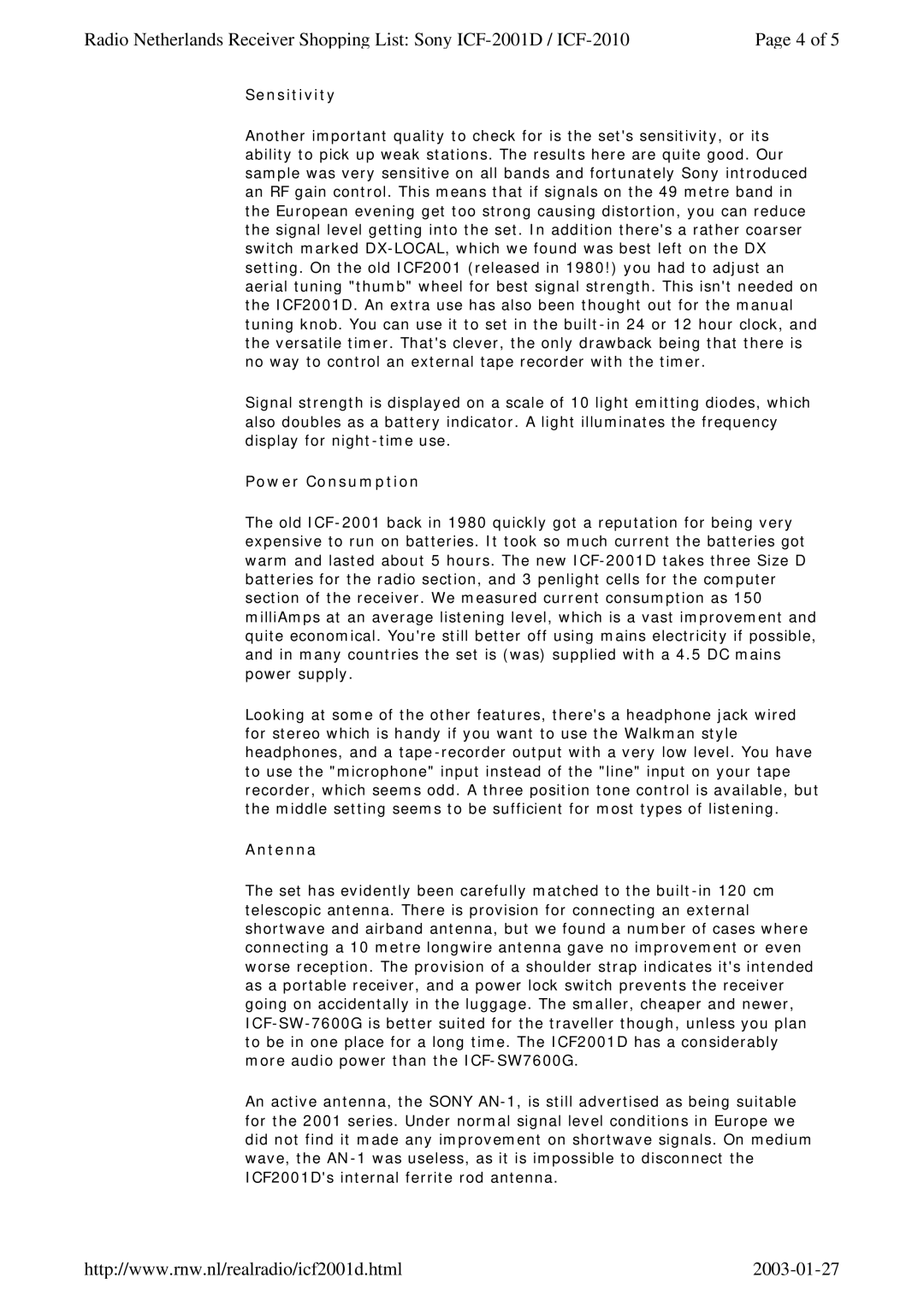Sensitivity
Another important quality to check for is the set's sensitivity, or its ability to pick up weak stations. The results here are quite good. Our sample was very sensitive on all bands and fortunately Sony introduced an RF gain control. This means that if signals on the 49 metre band in the European evening get too strong causing distortion, you can reduce the signal level getting into the set. In addition there's a rather coarser switch marked DX-LOCAL, which we found was best left on the DX setting. On the old ICF2001 (released in 1980!) you had to adjust an aerial tuning "thumb" wheel for best signal strength. This isn't needed on the ICF2001D. An extra use has also been thought out for the manual tuning knob. You can use it to set in the built-in 24 or 12 hour clock, and the versatile timer. That's clever, the only drawback being that there is no way to control an external tape recorder with the timer.
Signal strength is displayed on a scale of 10 light emitting diodes, which also doubles as a battery indicator. A light illuminates the frequency display for night-time use.
Power Consumption
The old ICF-2001 back in 1980 quickly got a reputation for being very expensive to run on batteries. It took so much current the batteries got warm and lasted about 5 hours. The new ICF-2001D takes three Size D batteries for the radio section, and 3 penlight cells for the computer section of the receiver. We measured current consumption as 150 milliAmps at an average listening level, which is a vast improvement and quite economical. You're still better off using mains electricity if possible, and in many countries the set is (was) supplied with a 4.5 DC mains power supply.
Looking at some of the other features, there's a headphone jack wired for stereo which is handy if you want to use the Walkman style headphones, and a tape -recorder output with a very low level. You have to use the "microphone" input instead of the "line" input on your tape recorder, which seems odd. A three position tone control is available, but the middle setting seems to be sufficient for most types of listening.
Antenna
The set has evidently been carefully matched to the built-in 120 cm telescopic antenna. There is provision for connecting an external shortwave and airband antenna, but we found a number of cases where connecting a 10 metre longwire antenna gave no improvement or even worse reception. The provision of a shoulder strap indicates it's intended as a portable receiver, and a power lock switch prevents the receiver going on accidentally in the luggage. The smaller, cheaper and newer, ICF-SW-7600G is better suited for the traveller though, unless you plan to be in one place for a long time. The ICF2001D has a considerably more audio power than the ICF-SW7600G.
An active antenna, the SONY AN-1, is still advertised as being suitable for the 2001 series. Under normal signal level conditions in Europe we did not find it made any improvement on shortwave signals. On medium wave, the AN -1 was useless, as it is impossible to disconnect the ICF2001D's internal ferrite rod antenna.
